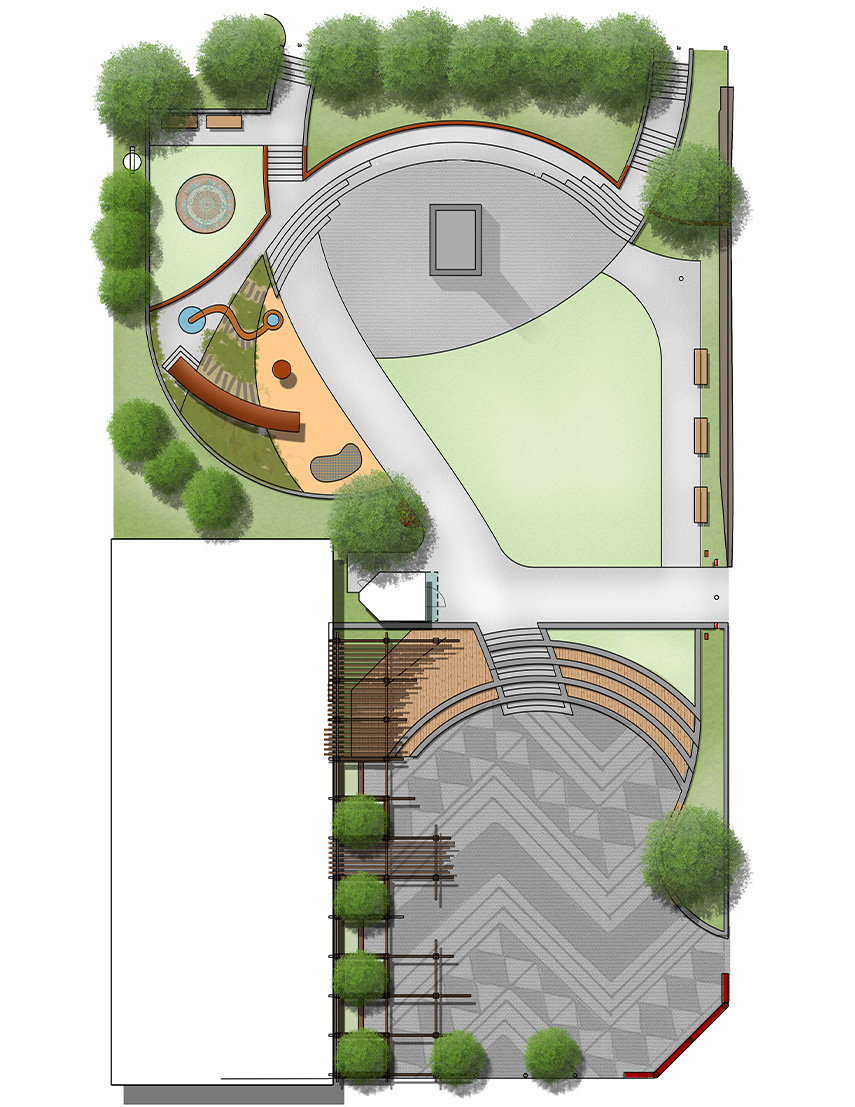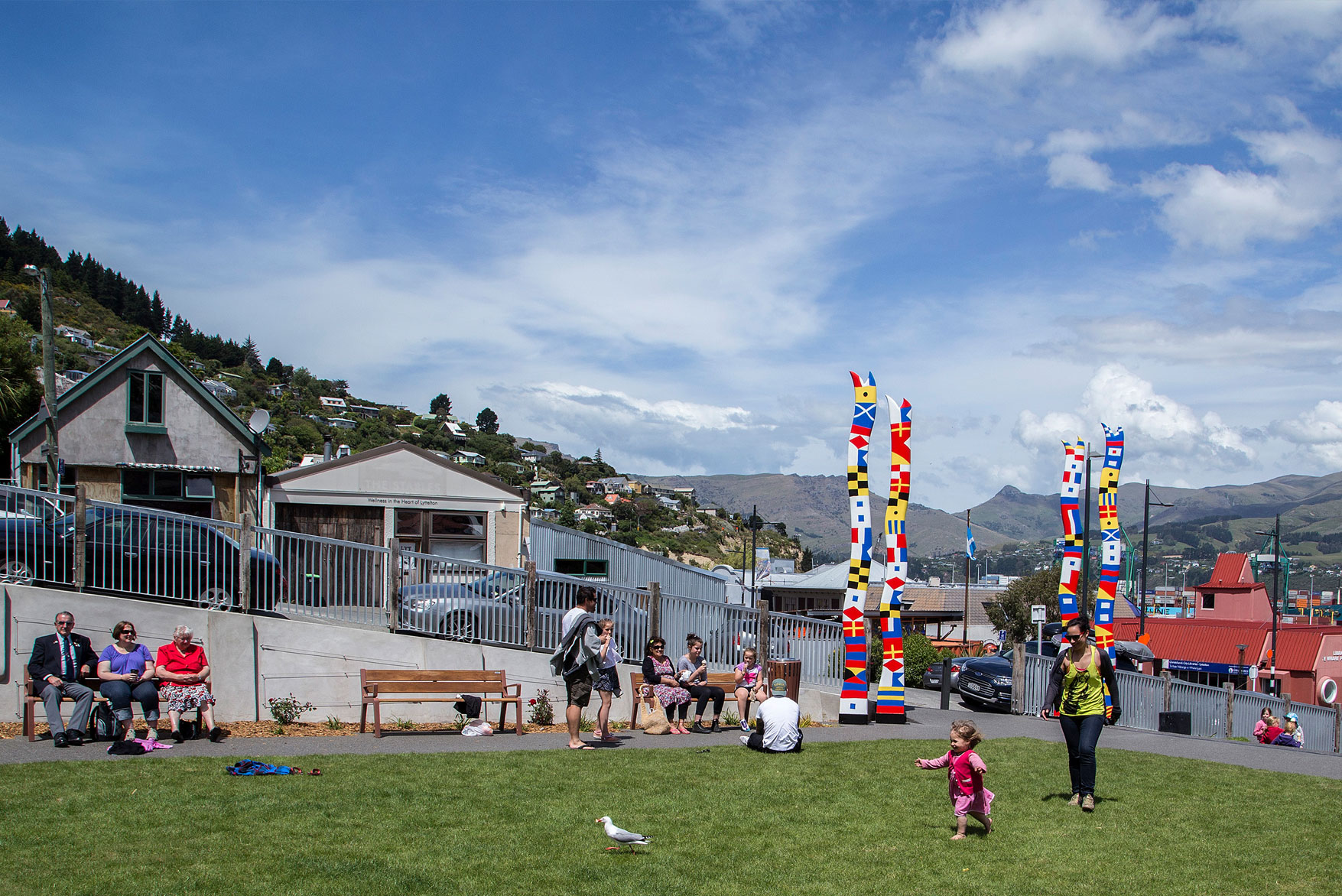In 2011, Lyttelton was devastated by a 6.3 magnitude earthquake, which left every second building on the town’s main street severely damaged. The historic Albion Hotel was one of these. After its demolition, a group of locals began playing pétanque on the site. The popularity of their activities led to site being transformed under the ‘Gap Filler’ urban regeneration initiative, aimed at temporarily activating post-quake vacant sites for public use. Out of the trauma and rubble – and many working bees later – a community hub and informal town square emerged.
Recognising the community’s need for a permanent public space, the Christchurch City Council bought the site in 2012. Together, the Council and community then developed a concept plan, for a multi-use civic space.
Boffa Miskell was engaged to progress the concept into a fully developed plan, including detailed design, and then oversee the construction. A particular requirement was to create a Lyttelton aesthetic that would celebrate the town’s character and colourful port history.
The now completed Albion Square is an integrated series of designed spaces. The busy lower level, which is adjoined by a private café, accommodates movement, activity and performance. The second level is a more passive space, suitable for both activity and reflection, with a flat lawn (very desirable in the steep terrain of Lyttelton) alongside the relocated War Memorial Cenotaph. A red rock wall of locally sourced volcanic stone, laid in a contemporary style, separates this second level from the uppermost space, where there are play opportunities and expansive views of the harbour below.
Artworks that were transitional features in the earlier ‘gap filler’ period of the site’s development are now permanent installations in the new square. Also to be installed is an entrance waharoa (gateway), designed and carved in consultation with the local Rapaki Marae. It will be called Ōhinehouroko, the name of the earliest Māori Paā site in the town area, which can be interpreted as ‘establishing a place of new peacefulness’.
Albion Square was officially opened in November 2014, timed to coincide with the centenary of New Zealands’ entry into World War One.



